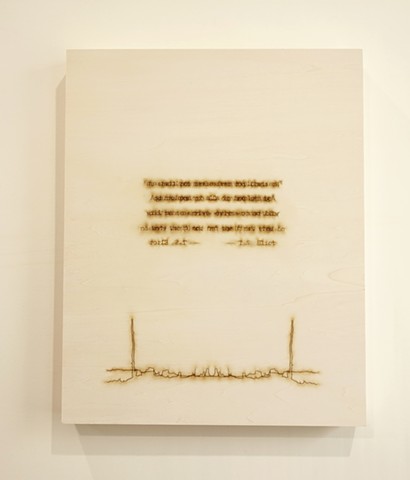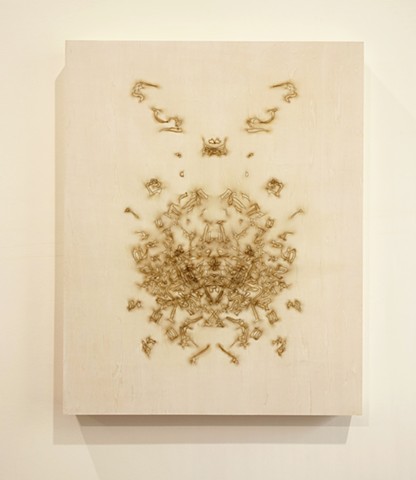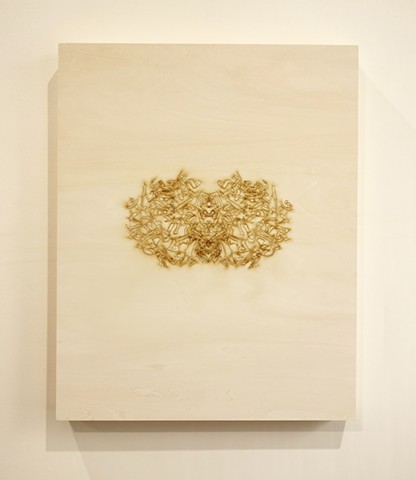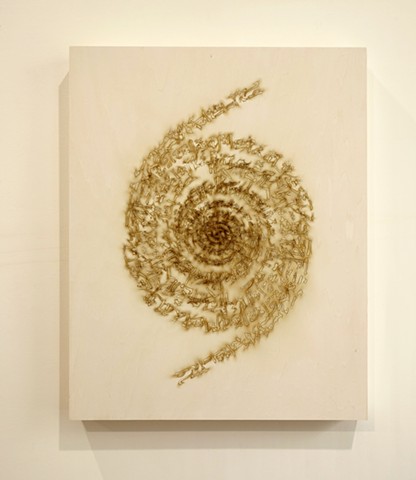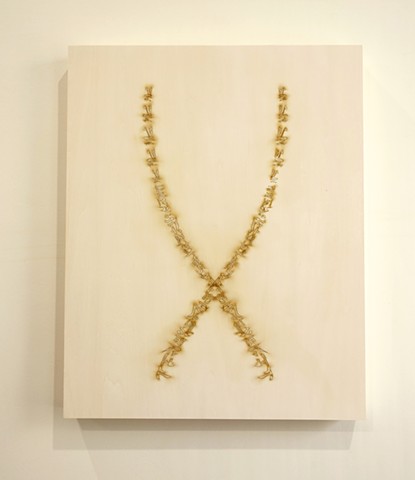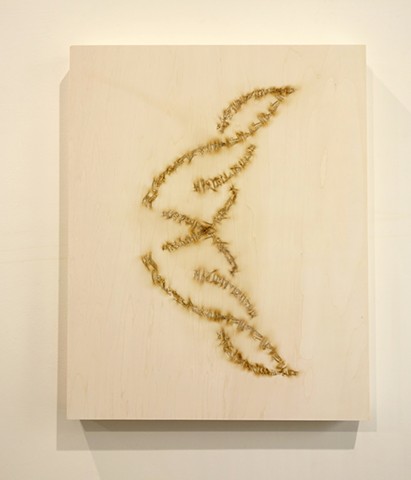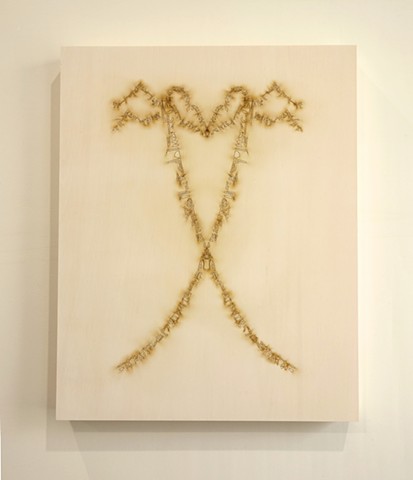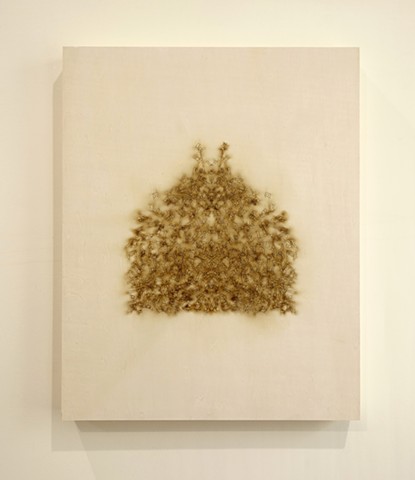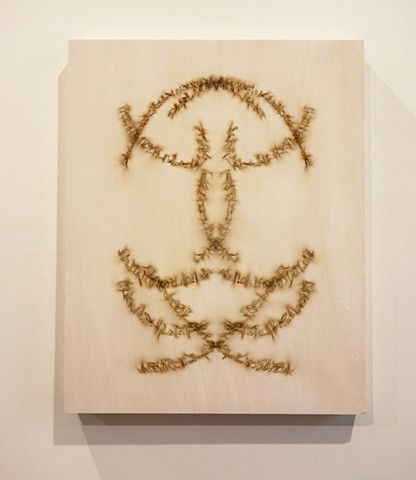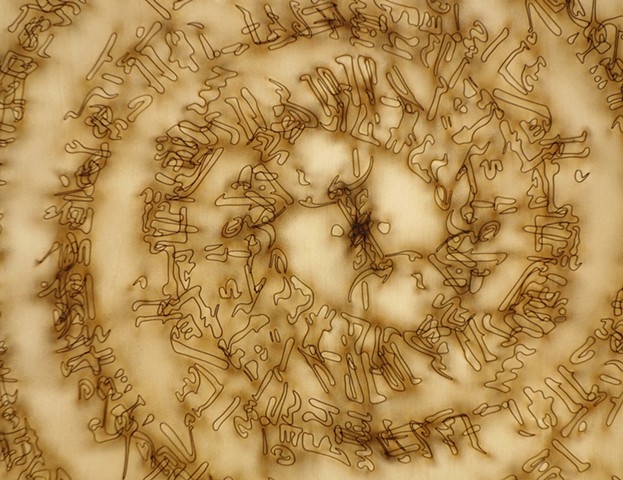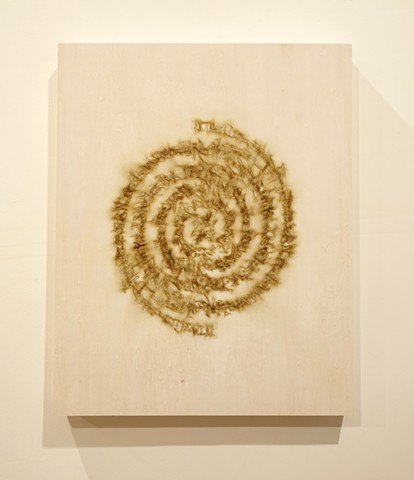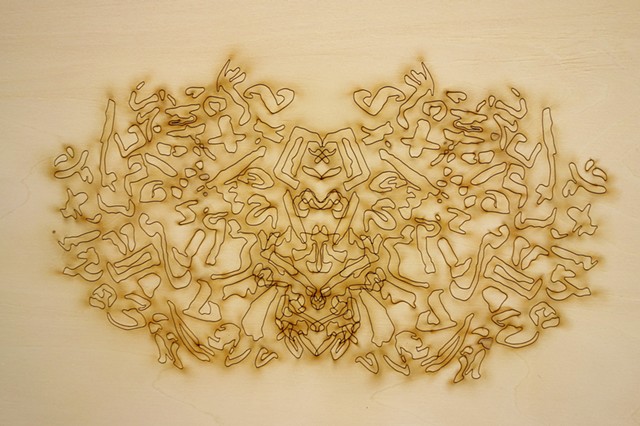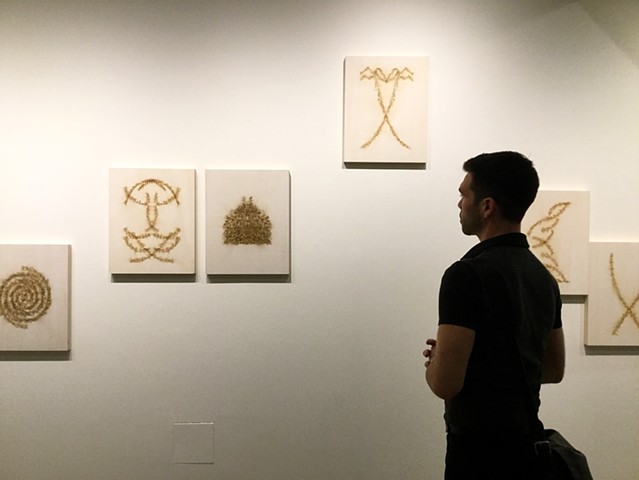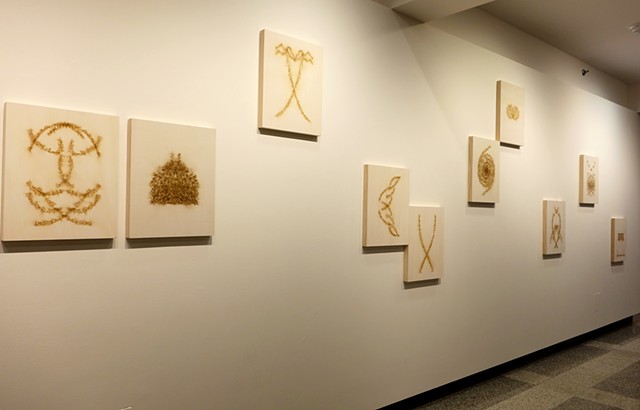Inscription drawings
Inscription drawings (translocation of double-stranded passage)
2016 (first edition: 12 pieces)
Laser cut on birchwood panel
20"x 16"x 1.5" each
2018 (second edition: 13 pieces)
Laser cut with acrylic and varnish on birchwood panel
20"x 16"x 1.5" each , and 18”x 18”x 1.5” (one)
These laser cut drawings were made with hieratic script (cursive Egyptian hieroglyphics) that described magic spells for treating illnesses in The Edwin Smith Papyrus, the earliest known surgical treatise on trauma dating back to around 1,600 BCE in ancient Egypt. The Edwin Smith Papyrus was also the earliest known medical document that included prognosis for the first time in recorded history. It showed the high level of medical knowledge with detailed procedures, but not without some magic. Magic spells were included as a legitimate treatment, but most of them were written on the verso and mostly for terminal illnesses.
The Edwin Smith Papyrus also provided the earliest description of human tumor. It included several cases of tumors with visual and tactile characteristics such as hot and cold tumors. Prognosis given to patients with tumors was either “An ailment which I will contend” or "An ailment not to be treated,” and mostly regarded as incurable. Cancer, as I learned, is one of the oldest diseases ever described and studied in human history.
In this work, I explore power of words for healing and belief in magic (for cure) that seem to be completely at odds with science. We regard science as rational, but in the ancient time, science was not so separated from supernatural power—unknowable and beyond human understanding. In this work, magic spells were arranged in new iterations and burned into wood panels by laser cut. These letters are impossible to decipher for the untrained eyes, and it make me think of other ways of using letters in science—DNA code. I think of a long history to get to where we are now. The last panel in this series include a quote from T.S. Eliot’s poem, "Little Gidding," but the same quote was burned twice on top of each other; with the quote in backward on top of the first ones, which makes it impossible to read—returning to unknowable. This quote was used at the end of a 2001 paper entitled The Initial sequencing and analysis of the human genome.
We shall not cease from exploration
and the end of all our exploring
will be to arrive where we started
and know the place for the first time.
Sources:
Ades, Felipe, Konstantinos Tryfonidis, and Dimitrios Zardavas. 2017. “The Past and Future of Breast Cancer Treatment—from the Papyrus to Individualised Treatment Approaches.” Ecancermedicalscience 11: 746. https://doi.org/10.3332/ecancer.2017.746.
Breasted, James Henry. 1991. The Edwin Smith Surgical Papyrus : Published in Facsimile and Hieroglyphic Transliteration with Translation and Commentary in Two Volumes. Oriental Institute [of the University of Chicago].
Sanchez, Gonzalo M, Edmund S Meltzer, Edwin Smith, and W. Benson Harer. 2012. The Edwin Smith Papyrus: Updated Translation of the Trauma Treatise and Modern Medical Commentaries. Atlanta, Ga.: Lockwood Press.
